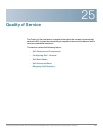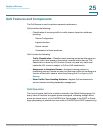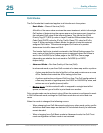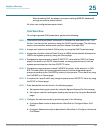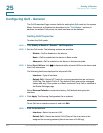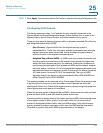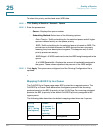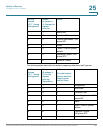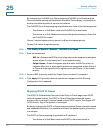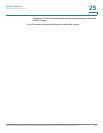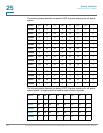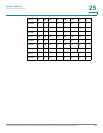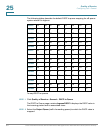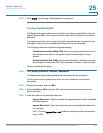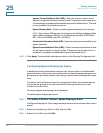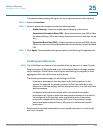
Quality of Service
Configuring QoS - General
497 Cisco Small Business 200, 300 and 500 Series Managed Switch Administration Guide (Internal Version)
25
By changing the CoS/802.1p to Queue mapping (CoS/802.1p to Queue) and the
Queue schedule method and bandwidth allocation (Queue page), it is possible to
achieve the desired quality of service in a network.
The CoS/802.1p to Queue mapping is applicable only if one of the following exists:
• The device is in QoS Basic mode and CoS/802.1p trusted mode
• The device is in QoS Advanced mode and the packets belong to flows that
are CoS/802.1p trusted
Queue 1 has the lowest priority, queue 4 or 8 has the highest priority.
To map CoS values to egress queues:
STEP 1 Click Quality of Service > General > CoS/802.1p to Queue.
STEP 2 Enter the parameters.
• 802.1p—Displays the 802.1p priority tag values to be assigned to an egress
queue, where 0 is the lowest and 7 is the highest priority.
• Output Queue—Select the egress queue to which the 802.1p priority is
mapped. Either four or eight egress queues are supported, where Queue 4
or Queue 8 is the highest priority egress queue and Queue1 is the lowest
priority.
STEP 3 For each 802.1p priority, select the Output Queue to which it is mapped.
STEP 4 Click Apply. 801.1p priority values to queues are mapped, and the Running
Configuration file is updated.
Mapping DSCP to Queue
The DSCP (IP Differentiated Services Code Point) to Queue page maps DSCP
values to egress queues. The DSCP to Queue Table determines the egress
queues of the incoming IP packets based on their DSCP values. The original VPT
(VLAN Priority Tag) of the packet is unchanged.
By simply changing the DSCP to Queue mapping and the Queue schedule method
and bandwidth allocation, it is possible to achieve the desired quality of services
in a network.
The DSCP to Queue mapping is applicable to IP packets if:
• The device is in QoS Basic mode and DSCP is the trusted mode, or



